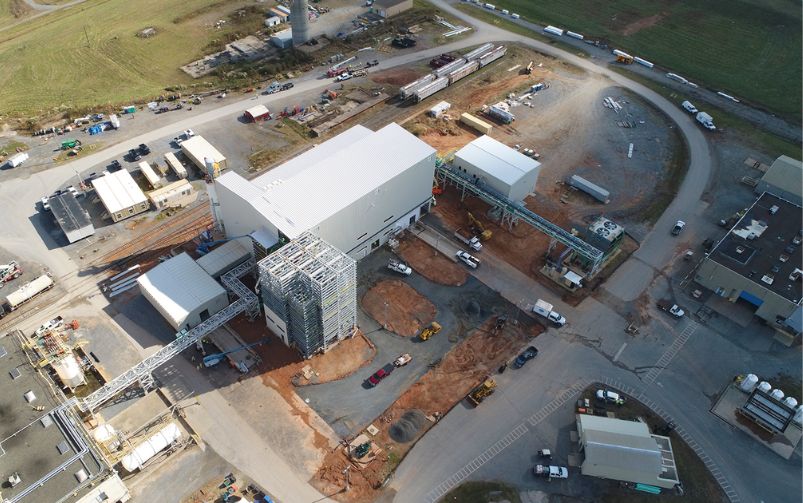CIM has created new ESG guidelines that can be utilized by all stakeholders in the mining industry. Photo by Artyom Korshunov via Unsplash.
CIM’s Environmental and Social Responsibility Society, under the direction of the Mineral Resource and Mineral Reserve (MRMR) Committee, has created a brand-new set of Environmental, Social and Governance (ESG) Guidelines for Mineral Resource and Mineral Reserve Estimation.
The CIM Council adopted the new guidelines on Sept. 8 of this year, after a nearly seven-year process of researching, reviewing, drafting and re-drafting. The document will provide practitioners with key principles of ESG practices to help mineral resource and mining companies apply good practices as they manage the various risks and opportunities associated with their projects. The guidelines will serve as a resource for companies developing effective ESG strategies at any project stage.
Deborah A. McCombe, technical director of the global mining advisory at SLR Consulting Ltd, and Garth Kirkham, principal of Kirkham Geosystems, are the two leads of MRMR. McCombe said that the creation of the guidelines was in part inspired by the increasingly robust reporting standards in the mining industry.
“For the past few decades, there has been a greater focus on environmental, social and governance aspects in the mining industry. More recently, it’s been linked to the financing of projects,” she said. “At the same time, there’s been a lot of international environmental and social reporting standards and codes that have been developed and are becoming more and more robust. That, I think, is really the impetus for these guidelines: so that practitioners and companies would have a document to look to for key principles of environment, social and governance practices.”
An ESG working group led the process of creating the guidelines. As a subcommittee of the CIM Environmental and Social Responsibility Society, the working group was comprised of 20 practitioners, who are subject matter experts in the areas covered in the guidelines, which include climate change and greenhouse gases, biodiversity, pollution prevention, emergency preparedness and response.
The process also involved input and review from MRMR, as well as feedback from members of the Canadian Securities Administrators in British Columbia, Ontario and Quebec. In addition, as part of due diligence, the group went through a public consultation process to ensure anyone interested had the chance to comment.
Vivienne McLennan, a geologist who has been working in the mining industry for more than 25 years, volunteered to review the guidelines and provide commentary. She said that when she first began reviewing the document, she noticed it was easy to navigate and digest the guidelines—whether you are an industry expert or the average layperson.
“Even just looking at the table of contents, my very first thought was, it really outlines everything that you need to be considering in your projects, and from there, there's a really handy chart that shows which topics are most relevant at which project stage,” McLennan said. “So, you could jump right in and start educating yourself and checking yourself against where everyone is expected to be very early in the document.”
McLennan believes the guidelines will provide a helpful source guide for all stakeholders in the mining industry, which will help them navigate ESG issues appropriately and effectively.
“The biggest impact, I think, is having a document set for our target audience. It's written in a way that it speaks to non-ESG professionals who need to be aware of what the background and sources for more information are, so it's very educational,” she said.
As for how the document will be used in the future, McCombe and Kirkham said they believe it will provide value for many companies in the industry in various capacities.
“I think it’ll be a document that will be widely used by companies on an internal basis, and to provide some guidance on their external disclosure,” McCombe said. “These guidelines are for companies and projects to be used anywhere in the world, not just in Canada. They’re pretty broad guidelines that could be used in other jurisdictions, so it’s quite a good reference document and it will evolve with time.”
Kirkham noted that not only can practitioners use the guidelines internally to ensure they’re following the most up-to-date industry best practices, but they could also use them in a legal defence argument if needed.
“It’s a great document for geologists who were first stepping on the ground on how to address any environmental, social and governance issues,” Kirkham said. “When they’re doing technical reports, these are documents that they can refer to and make sure that the boxes are ticked and that all these aspects are addressed. Also, from a legal perspective, if by chance something goes to court, the practitioner can say, ‘Yes, I did follow ESG practice guidelines, and this is how I did it.’”
Jenifer Hill, principal at JLH Environmental and chair of the ESG working group, said that from the beginning, she wanted to be involved in the project because she is passionate about helping the industry move forward.
“I want to make sure that the qualified people have the tools that they need, and that investors are aware of and properly informed of all the risks, so that the mining projects are managed more effectively, and the mining industry reputation can improve,” Hill said. “Mining is an important component of our society; I think we really need mining, but we need to do it properly. We just need to provide the guidance and tools for people to do it effectively.”
From Hill’s perspective, the guidelines will help bring clarity to the mining industry as a whole so that investors understand the full risks behind new ventures, while also understanding the opportunities and benefits of the projects.
“It’s an opportunity for companies to show what they’re doing, and there are a lot of mining companies doing great things out there,” she said. “Hopefully, the guidelines will help demonstrate and improve the reporting on the good [aspects], [showcasing] positive things as well as the opportunities and the benefits of mining.”
Now that the guidelines have been released and adopted by the CIM Council, the committee’s next step is to focus on communication and dissemination to people working within the industry so that they are able to readily access the document.




